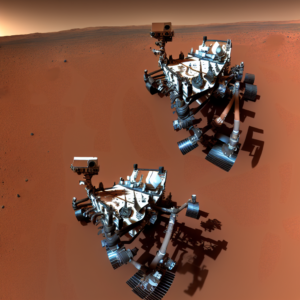In the realm of historical discovery, artificial intelligence (AI) is becoming an invaluable tool, particularly in the field of ancient Mesopotamian texts. These centuries-old clay tablets, etched with the wedge-shaped script known as cuneiform, hold the tales and records of one of the world’s earliest civilizations. Yet, with only a small fraction deciphered, the majority of these texts have remained silent—until now. As AI steps into the ancient hallways of history, we are on the verge of unraveling some of humanity’s earliest stories.
The Dawn of Writing: A Brief History of Cuneiform
The story of cuneiform begins about 6000 years ago in Mesopotamia, where the Sumerian people, residing in the fertile lands between the Tigris and Euphrates rivers, developed this script. Initially used for administrative purposes, such as recording the transfer of goods or rations of beer, cuneiform eventually became a medium for linguistic expression and literature.
- Transition to Expression: The shift from record-keeping to literary expression is marked by royal inscriptions and the oldest known literary texts dating back to approximately 2700 BC.
- Iconic Texts: Among the most famous works in cuneiform is the Epic of Gilgamesh, an epic poem that explores themes of heroism, friendship, and the search for eternal life.
Cuneiform was not restricted to the Sumerian language; it served as a writing system for several other languages, including Akkadian and Old Persian, over a span of 3000 years. Its impact extends beyond literature and into our daily lives, evident in the sexagesimal counting system that forms the basis for our 60-minute hour and 360-degree circle.
The Challenge of Deciphering Cuneiform
Despite having been deciphered 165 years ago, the majority of cuneiform tablets have not been translated, mainly due to the script’s complexity and the scarcity of scholars fluent in it. The hurdles in deciphering cuneiform include:
- Evolving Script: Cuneiform signs and their usage varied significantly over time.
- Handwriting Variability: Individual scribes had their unique handwriting styles, complicating the identification of signs.
- Sign Complexity: With over 900 different cuneiform signs, distinguishing one from another is an arduous task.
- Script Usage: Cuneiform was used for multiple languages, each with its spelling and grammatical nuances.
AI as a Beacon of Hope
AI technologies are now being employed to overcome these challenges, offering new insights into this ancient script.
- Deep Learning for Prediction: AI models are being trained to predict the text on missing parts of tablet fragments, filling in historical gaps with surprising accuracy.
- Machine Vision for Sign Recognition: Systems like Deepscribe leverage computer vision to identify cuneiform signs, a significant step toward facilitating the reading of these ancient texts.
Impact and Implications
The integration of AI into the study of cuneiform is revolutionizing our understanding of ancient Mesopotamian civilization. Through AI:
- Historical Narratives are Being Revived: AI allows us to access stories and records that have been silent for millennia, offering a deeper insight into the lives and thoughts of ancient peoples.
- New Historical Insights: The application of AI in deciphering cuneiform has led to discoveries such as the world’s oldest trigonometric table and insights into Babylonian mathematical practices.
Looking Ahead: The Future of Cuneiform Studies
The merging of AI with the study of ancient texts symbolizes a new era in historical research. As technology advances, it is plausible that:
- Enhanced Decipherment: AI’s capacity to decipher and translate cuneiform will continue to improve, uncovering more about ancient societies.
- Interdisciplinary Collaboration: The combination of AI technology with the expertise of historians and linguists will likely become standard practice in uncovering the past.
- Public Engagement: With greater insight into ancient civilizations, the public’s interest in history and archaeology may be invigorated, fostering a deeper appreciation for our shared human heritage.
In the quest to uncover the myriad secrets held within ancient cuneiform texts, one of the most remarkable discoveries relates to the mathematical sophistication of the Mesopotamians. Specifically, the understanding and use of trigonometry by these ancient civilizations not only challenges our historical perceptions but also showcases the profound intellectual achievements of our ancestors.
The Babylonian Brilliance in Mathematics
The ancient Mesopotamians, particularly the Babylonians, demonstrated an advanced grasp of mathematical concepts, including trigonometry, which predated Greek mathematics by centuries. This assertion is supported by several compelling pieces of evidence found in cuneiform tablets.
Plimpton 322: The World’s Oldest Trigonometric Table
- Discovery and Significance: Plimpton 322, a Babylonian clay tablet dating back to 1800 BCE, was discovered to be the oldest known trigonometric table. This table does not merely list numbers but rather represents a sophisticated understanding of Pythagorean triples and trigonometric principles.
- Mathematical Innovation: The tablet suggests that Babylonians used a base-60 (sexagesimal) number system, as opposed to the base-10 (decimal) system used today. This approach allowed them to achieve remarkable accuracy in their calculations.
Advanced Geometrical Computations
- Architectural Marvels: The precision in the construction of temples, ziggurats, and canals in Mesopotamia necessitated a deep understanding of angles and dimensions, which in turn implies a practical application of trigonometry.
- Astronomical Calculations: The Babylonians were also accomplished astronomers, utilizing their mathematical knowledge to predict celestial events. This precision underscores a complex understanding of geometry and trigonometry.
The Implications of Mesopotamian Mathematics
The evidence of trigonometry in cuneiform texts not only revises our understanding of mathematical history but also highlights the cultural and scientific exchanges across civilizations. The Mesopotamians laid the groundwork for mathematical concepts that would be further developed by subsequent cultures, including the Greeks.
- Foundation for Future Mathematics: The trigonometric principles found in Babylonian tablets are remarkably similar to those used in today’s trigonometry, signifying the long-lasting impact of their discoveries.
- Cross-Cultural Influence: The transmission of mathematical knowledge from Mesopotamia to other regions demonstrates the interconnectedness of ancient civilizations and the shared legacy of human intellectual achievement.
Conclusion: Beyond the Wedges – Revelations of Ancient Intellectual Might
The meticulous carving of wedge-shaped cuneiform signs into clay tablets by the ancient Mesopotamians has, centuries later, provided us with a window into their world—one of remarkable sophistication, innovation, and intellectual curiosity. The utilization of AI in deciphering these texts has not only deepened our understanding of Mesopotamian civilization but also reaffirmed the timeless nature of human inquiry and exploration.
As we continue to decipher the mathematical manuscripts of the past, we do more than just uncover facts; we revive the spirit of ancient scholarship and its relentless pursuit of knowledge. The legacy of the Mesopotamians, encapsulated in their understanding of trigonometry and beyond, serves as a testament to the boundless potential of the human intellect. It prompts us to look back in wonder at our intellectual ancestors and, in doing so, inspires us to look forward to the horizons yet unexplored.
In the deciphering of ancient cuneiform texts and the revelation of Mesopotamian mathematical mastery, we find a compelling narrative of human achievement. This story, etched in clay and revealed through the lens of contemporary technology, invites us to reevaluate the milestones of our collective intellectual journey. It underscores the continuity of the human quest for understanding, from the banks of the ancient Tigris and Euphrates to the digital frontiers of today.




